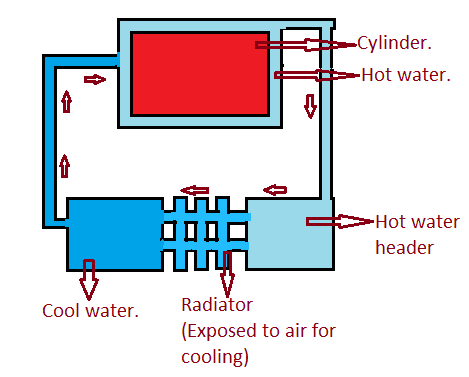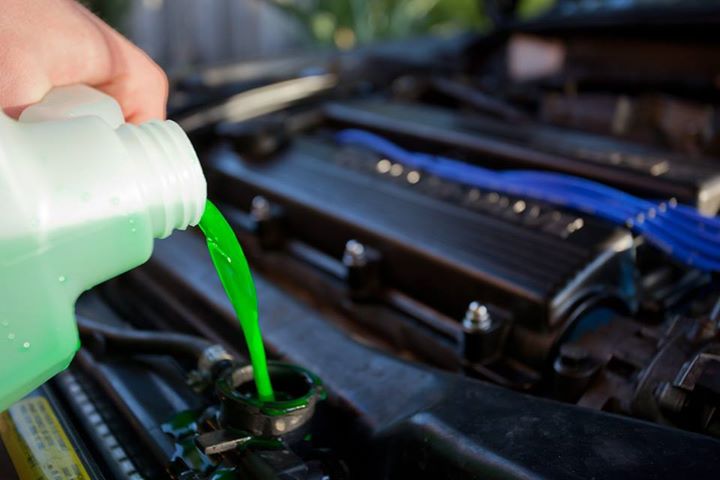Introduction: The PCV valve is an important part of your vehicle’s emissions control system. It helps keep your engine running smoothly and prevents it from discharging harmful pollutants into the atmosphere. Let’s take a closer look at how the PCV valve works and why it’s so important for your car.
What is a Positive Crankcase Ventilation?
Positive Crankcase Ventilation (PCV) is a system used in internal combustion engines to manage and control the gases that accumulate in the crankcase, the area where the engine’s pistons move up and down. The PCV system helps prevent the buildup of harmful fumes, oil vapors, and blow-by gases that result from the combustion process. It consists of a valve, typically located in the engine’s valve cover, and a series of tubes or hoses.
In operation, the PCV valve draws these gases from the crankcase and redirects them back into the engine’s intake manifold. This process allows the gases to be burned off along with the fuel-air mixture during combustion. By recycling these gases, the PCV system not only reduces emissions that contribute to air pollution but also prevents the pressure buildup that could lead to leaks, decreased engine efficiency, and potential damage. Regular maintenance and checks of the PCV system are important to ensure proper engine function and emission control.
How Does the Positive Crankcase Ventilation Work?
Positive Crankcase Ventilation (PCV) is a system designed to manage the gases that accumulate in the crankcase of an internal combustion engine. Here’s how it works:
Gases Accumulation: During the engine’s operation, some combustion gases, along with oil vapors and blow-by gases from the combustion process, can escape past the piston rings and into the crankcase. These gases can lead to increased pressure within the crankcase, which can result in oil leaks, decreased engine efficiency, and increased emissions.
PCV Valve: The PCV system incorporates a one-way valve called the PCV valve. This valve is typically located in the engine’s valve cover or an area connected to the crankcase. The PCV valve is designed to allow the flow of gases in one direction only – from the crankcase to the intake manifold.
Intake Manifold Connection: The other end of the PCV valve is connected to the engine’s intake manifold, which is responsible for supplying the engine with the air-fuel mixture. The intake manifold is placed after the throttle body, closer to the engine.
Vacuum Effect: The intake manifold operates at a lower pressure than the crankcase due to the suction created by the engine’s pistons and the intake air being drawn in. This pressure difference, known as a vacuum, causes the PCV valve to open. As a result, the accumulated gases and vapors in the crankcase are drawn through the PCV valve and into the intake manifold.
Combustion: Once the gases enter the intake manifold, they mix with the incoming air-fuel mixture. During combustion, these gases are burned along with the fuel, resulting in their safe disposal through the exhaust system.
By rerouting these gases back into the engine’s combustion process, the PCV system prevents the accumulation of harmful emissions in the crankcase and reduces the pressure that could lead to various engine issues. It’s an important component of modern engines that contributes to emission control, engine efficiency, and overall engine health. Regular maintenance, including checking and replacing the PCV valve when necessary, helps ensure the proper functioning of the PCV system.
Benefits of a Positive Crankcase Ventilation?
Having a functioning PCV valve can help improve your vehicle’s fuel efficiency and performance, as well as reduce pollution by controlling emissions. A properly functioning PCV system will ensure that all of your engine components are working efficiently and that you’re getting optimal performance out of your car or truck. Additionally, having a functioning PCV valve will help extend the life of your oil because it will prevent contaminants such as dirt particles or moisture from entering into the crankcase and causing damage.
A faulty or worn-out PCV valve can cause problems for your vehicle, so it’s important to have it inspected regularly and replaced if necessary. Regularly servicing and replacing your PCV valve is key to keeping your car running smoothly and helping you avoid costly repairs down the road.
Conclusion: Positive Crankcase Ventilation (PCV) valves are an essential part of any vehicle’s emission control system. They help reduce pollutants released into the atmosphere while ensuring proper oil maintenance and optimal performance for your engine components. Regular inspection and replacement of worn-out or faulty PCVs is essential for keeping your car running in tip-top shape while helping preserve its longevity. If you want to get more mileage out of your car while reducing emissions, make sure you keep an eye on this vital component!
Frequently Asked Questions:
How does a PCV system work?
The Positive Crankcase Ventilation (PCV) system operates by using a one-way valve, often located in the engine’s valve cover, to route gases from the crankcase to the intake manifold. As the engine runs, the intake manifold’s lower pressure creates a vacuum that opens the PCV valve. This allows gases, including combustion byproducts and oil vapors, to be drawn from the crankcase into the intake manifold. These gases then mix with the incoming air-fuel mixture and are subsequently burned during combustion, reducing emissions and preventing pressure buildup in the crankcase. Regular maintenance of the PCV valve ensures its proper functioning, contributing to emission control and engine efficiency.
What is the most common problem with PCV valves?
The most common problem with PCV valves is clogging or fouling due to the accumulation of oil sludge and debris over time. This can obstruct the valve’s proper functioning, leading to reduced airflow and ineffective ventilation of the crankcase gases. A clogged PCV valve can result in increased crankcase pressure, potential oil leaks, decreased engine efficiency, and heightened emissions. Regular maintenance, including cleaning or replacement of the PCV valve, helps prevent these issues and maintains the system’s effectiveness.
What are the components of a PCV system?
The components of a PCV (Positive Crankcase Ventilation) system typically include the PCV valve itself, which is a one-way valve placed in the engine’s valve cover or a similar location. The system also includes hoses or tubes connecting the PCV valve to the intake manifold and the crankcase. These hoses facilitate the flow of gases. Additionally, the intake manifold and the engine’s crankcase form integral parts of the system. Together, these components create the pathway for gases to move from the crankcase to the intake manifold, where they are mixed with the air-fuel mixture and burned during combustion.
How is PCV flow controlled?
PCV flow is controlled through a combination of vacuum pressure and the design of the PCV valve. The valve itself is engineered to open under specific pressure differentials. When the engine is running, the intake manifold’s lower pressure compared to the crankcase creates a vacuum. This vacuum force acts on the diaphragm or spring within the PCV valve, causing it to open. As the valve opens, it allows gases from the crankcase, including blow-by gases and oil vapors, to flow into the intake manifold. The valve’s design ensures that it opens only within the desired pressure range, regulating the flow of gases and maintaining proper crankcase ventilation.
What is the principle of PCV valve?
The principle of a PCV (Positive Crankcase Ventilation) valve is based on pressure differentials and controlled airflow. The valve operates as a one-way device, allowing gases from the engine’s crankcase to flow into the intake manifold. When the engine is running, the intake manifold operates at a lower pressure than the crankcase, creating a vacuum. This vacuum opens the PCV valve, enabling gases, including blow-by gases and oil vapors, to be drawn from the crankcase to the intake manifold. Subsequently, these gases are mixed with the incoming air-fuel mixture and burned during combustion, reducing emissions and maintaining proper crankcase ventilation.


